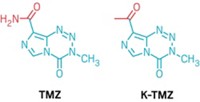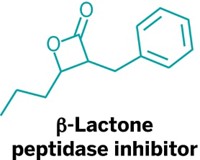Advertisement
Grab your lab coat. Let's get started
Welcome!
Welcome!
Create an account below to get 6 C&EN articles per month, receive newsletters and more - all free.
It seems this is your first time logging in online. Please enter the following information to continue.
As an ACS member you automatically get access to this site. All we need is few more details to create your reading experience.
Not you? Sign in with a different account.
Not you? Sign in with a different account.
ERROR 1
ERROR 1
ERROR 2
ERROR 2
ERROR 2
ERROR 2
ERROR 2
Password and Confirm password must match.
If you have an ACS member number, please enter it here so we can link this account to your membership. (optional)
ERROR 2
ACS values your privacy. By submitting your information, you are gaining access to C&EN and subscribing to our weekly newsletter. We use the information you provide to make your reading experience better, and we will never sell your data to third party members.
Pharmaceuticals
Long-Lasting Enzyme Chews Up Cocaine
Biochemistry: Researchers increase the stability and efficiency of a natural enzyme that breaks down cocaine, offering a potential treatment for overdose and addiction
by Erika Gebel Berg
June 23, 2014

Despite cocaine’s undeniable destructiveness, there are no antidotes for overdoses or medications to fight addiction that directly neutralize cocaine’s powerful effects. A natural bacterial enzyme, cocaine esterase, could help by chopping up cocaine in the bloodstream. But the enzyme is unstable in the body, losing activity too quickly to be a viable treatment. Now, using computational design, researchers tweaked the enzyme to simultaneously increase stability and catalytic efficiency (ACS Chem. Biol. 2014, DOI: 10.1021/cb500257s).
Cocaine esterase, originally isolated from bacteria living in the soil near coca plants, hydrolyzes cocaine with high efficiency, destroying the drug’s potency. However, the half-life of the protein is only 12 minutes at body temperature. “It would be hard to use this enzyme for therapeutic purposes,” says Chang-Guo Zhan of the University of Kentucky.
In a previous study, Zhan introduced two mutations to cocaine esterase, extending the half-life of the enzyme to about six hours—long enough, perhaps, to treat an overdose (Mol. Pharmacol. 2009, DOI: 10.1124/mol.108.049486). However, six hours isn’t enough, Zhan says, to treat addiction. For that, he’d want an enzyme that could remain circulating in the bloodstream for days or weeks, blocking the cocaine high so that an addict could break the habit. So Zhan’s team turned to a computational approach that could identify additional structural modifications to further increase cocaine esterase’s stability.
The researchers first identified the enzyme’s greatest weakness under rising temperatures. The team studied a computational model of the enzyme as it was heated from 10 to 300 K, looking for the part of the enzyme that unraveled first. They then tested mutations to make that region stable, while also ensuring that their changes didn’t alter the active site’s flexibility, which is critical for catalysis. In the end, the researchers needed just two changes: They made two cysteine mutations in the vulnerable core of the enzyme to form a disulfide bond. This molecular crossbeam increased the in vitro half-life of cocaine esterase to 100 days, while also boosting catalytic efficiency by 150%.
Zhan’s team next tested the enzyme’s stability in the bloodstreams of mice. They attached polyethylene glycol to the surface of the mutant enzyme, which is a common chemical trick drug designers use to improve the in vivo half-life of protein-based drugs. Mice injected with the tagged enzyme survive daily lethal doses of cocaine for an average of 94 hours.
S. Michael Owens of the University of Arkansas for Medical Sciences says the enzyme looks hopeful for treating overdoses. It also may work to treat addiction, he says, but additional research is needed to determine if the enzyme works fast enough to eliminate cocaine in the body before it can have its effect in the brain.





Join the conversation
Contact the reporter
Submit a Letter to the Editor for publication
Engage with us on Twitter